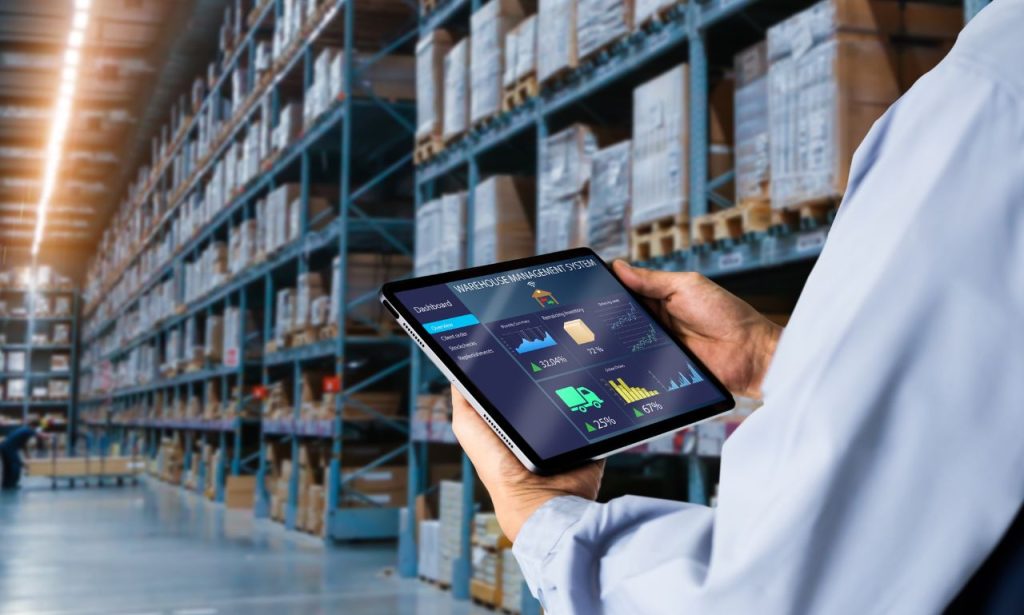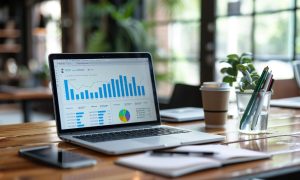A strong supply chain isn’t built on guesswork. It’s driven by data—and, more importantly, by demand forecasting. This article explores why demand forecasting is not just a nice-to-have but the absolute core of a resilient supply chain.
You’ll see how it influences inventory decisions, customer satisfaction, and operational agility. We’ll also explore how real-time data, AI, and simulation models help companies make smarter, faster decisions. Want to improve your supply chain’s resilience? Start here—with the forecast.
The Role of Demand Forecasting in Strategic Planning
Strategic planning doesn’t start in the boardroom—it starts with numbers. Demand forecasting provides the foundation for decisions about production, distribution, and procurement. Without accurate forecasts, businesses risk producing too much or too little.
Think about it: if you’re in the automotive supply chain, a wrong call on vehicle usage trends could delay production by weeks. That’s not just lost revenue—it’s lost trust. McKinsey & Company has consistently noted that demand forecasting accuracy can improve supply chain planning by up to 65%.
Even legacy companies are investing in advanced demand planning systems. Why? Because the cost of being wrong is just too high. From seasonal spikes to global events, forecasting helps teams stay ahead instead of reacting after the damage is done.
Enhancing Inventory Management

Here’s the truth: excess inventory drains your cash flow. Not enough inventory? That’s missed sales. Demand forecasting helps identify the optimal point.
By anticipating customer needs, you stock smarter—not more. Inventory turnover improves, warehouse costs decrease, and capital isn’t tied up in obsolete stock. A 2022 report by Gartner showed that companies using predictive analytics for inventory management saw 30% lower carrying costs.
Let’s say you manage logistics for a retail brand. Without proper forecasting, your back-to-school season could flop due to mismatched inventory. But with data-backed predictions, you restock based on real demand—not assumptions. That’s inventory control with precision.
Improving Customer Satisfaction
Have you ever walked into a store and found empty shelves? Frustrating, right? That’s the customer impact of poor forecasting.
Customers expect products to be available when they want them. Demand forecasting meets those expectations by reducing stockouts and delivery delays. When products arrive on time, satisfaction grows—and so does loyalty.
Companies like Amazon have made this their game. Their secret? Predictive demand models powered by AI and real-time shopping data. The result is not just fast shipping but accurate fulfillment. It’s not magic—it’s demand forecasting done right.
Role of Artificial Intelligence and Data Analytics
Forecasting is no longer about Excel spreadsheets. It’s about machine learning algorithms, neural networks, and real-time data streams. AI brings speed and scalability to forecasting that manual methods can’t match.
Using AI, companies can analyze historical trends, customer behavior, and even weather patterns. Then, models predict future demand with far greater accuracy. Amazon and Walmart utilize these tools daily to optimize their supply chain decisions.
Data analytics layers even more insight. It breaks down sales by geography, time, and channel. Would you like to know how your product performs in Nairobi compared to New York? Data analytics will tell you. That’s power—unlocked by AI.
Integration of IoT and Real-Time Data
Your supply chain doesn’t live in a vacuum. It moves with trucks, weather, sports, and consumer clicks. That’s why IoT is transforming demand forecasting.
IoT devices in trucks, warehouses, and stores feed real-time data into forecasting systems. These sensors report vehicle usage, inventory levels, and even shelf movements. Now, your supply chain isn’t just reactive—it’s predictive.
Let’s say a sensor in your cold chain alerts you to a refrigeration issue. Your system automatically adjusts future shipments based on that data. That’s not a glitch—that’s a win. Real-time visibility from IoT tools ensures accurate and responsive forecasts.
Enhancing Supply Chain Visibility
Visibility is more than a dashboard—it knows what’s happening at every touchpoint in real time. Demand forecasting plays a considerable role here.
When demand is forecasted accurately, everyone—from procurement to logistics—works with the exact expectations. There’s alignment across the supply chain. With cloud-based planning tools, this visibility is shared across suppliers, partners, and internal teams.
A supply chain without visibility is like driving with a blindfold. You might move, but you’ll hit walls. Demand forecasting pulls off the blindfold and shows the road ahead. For companies like North Bay Distribution, visibility has turned supply chain chaos into clarity.
Agile Responses to Market Fluctuations
Markets move fast—consumer behavior shifts. Geopolitical tensions spike. In a world this volatile, agility is key.
Demand forecasting enables agile responses by giving early signals. A new TikTok trend is driving up interest in your product. A supplier in Asia may be facing a labor strike. Good forecasts pick up those signals before they cause damage.
Agility isn’t just about speed—it’s about speed with direction. Companies using forecasting models can reallocate resources, reroute shipments, and adjust production schedules. They don’t panic—they pivot. That’s resilience in action.
Simulation Models and Scenario Planning
Sometimes, you need more than a prediction—you need to test “what ifs.” That’s where simulation models come in.
Simulation models help you understand how different factors—like supplier delays or tariff changes—might impact demand. Monte Carlo simulations, for example, run thousands of scenarios to help teams prepare for a wide range of possibilities.
These tools don’t just tell you what might happen; they also help you understand what might happen. They tell you how to respond. Scenario planning enables you to create playbooks in advance, allowing you to respond effectively to unexpected events. If Plan A fails, Plans B and C are ready. That’s how organizations avoid chaos and continue to move forward.
Anticipating Demand Fluctuations
Demand is never static. Holidays, trends, and disasters—all affect customer behavior. Demand forecasting allows companies to prepare for these fluctuations.
By utilizing time series analysis and seasonal trend modeling, you can effectively plan for holiday peaks and anticipate post-holiday slumps. Retailers often plan their entire year around Black Friday forecasts. Miss that window, and you’re toast.
Companies like Target don’t guess—they plan based on solid demand data. They examine POS systems, historical sales data, and promotional calendars. This level of detail ensures that shelves are stocked when consumers arrive.
Mitigating Supply Chain Risks
Risk is part of every supply chain. But intelligent forecasting can help you dodge the worst of it.
By identifying patterns and predicting demand shifts, forecasting enables you to identify vulnerabilities before they become disasters. It also improves lead time management, allowing you to buffer against supplier delays or logistics disruptions.
Imagine being able to spot a raw material shortage six weeks in advance. You’d adjust your orders, find alternatives, and avoid a crisis. That’s risk mitigation powered by data—not luck.
Companies in the pharmaceutical industry, for example, can’t afford to run out of critical ingredients. With forecasting software, they minimize those risks by staying ahead of demand curves and supply chain bottlenecks.
Informed Decision-Making Processes

Want better decisions? Start with better data. Demand forecasting enables decision-making to shift from reactive to proactive.
Leadership can make informed choices about hiring, production, and even marketing spend. Demand data also drives supplier negotiations. If you know your volume next quarter, you negotiate with confidence.
And it’s not just executives. Warehouse teams, customer support, and finance all benefit from clear demand signals. It creates cohesion. Everyone rows in the same direction. That’s how innovative companies move faster—and win bigger.
Conclusion
The future of supply chains isn’t about guesswork—it’s about foresight. Demand forecasting is the compass guiding your supply chain through uncertainty.
From inventory optimization to customer satisfaction, every part of your operation improves when forecasts are accurate and real-time. Add AI, IoT, and simulation models, and you don’t just react—you lead.
If you’re serious about building a resilient supply chain, don’t start with trucks. Start with the forecast. That’s where the real power begins.
ALSO READ: The Key to Becoming More Resilient in Business
FAQs
It helps plan inventory, avoid stockouts, manage risks, and improve customer satisfaction.
AI analyzes massive data sets quickly, identifies patterns, and predicts future demand with higher accuracy than traditional methods.
Standard tools include time series analysis, regression models, neural networks, and simulation models, such as Monte Carlo.
Retail, manufacturing, automotive, pharma, and logistics companies depend heavily on accurate demand forecasts.
Absolutely. Even basic forecasting helps optimize stock, improve cash flow, and enhance customer experience.




